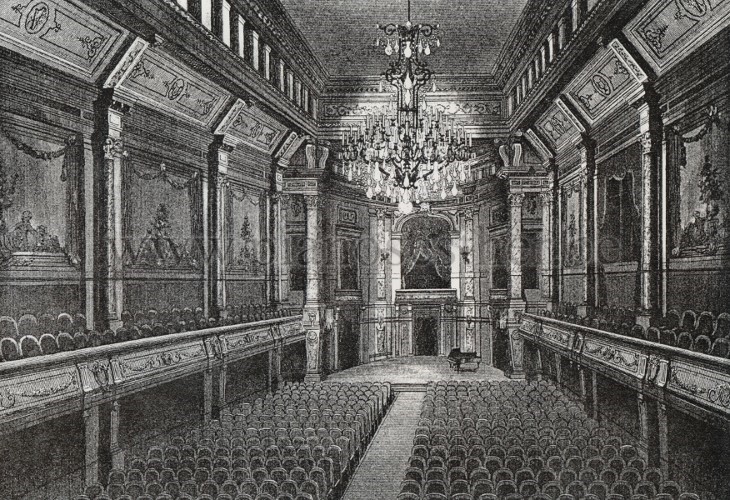I’m researching the very famous Salle Erard recital hall. The hall has been incredibly active since mid-late 19th century. It has premiered pieces by Debussy, Ravel, and Messiaen plus many more famous composers. Performers from all across the world have graced its stage, and many famous recitals have been held their and yet, all of the research previously done on this seemingly important concert hall can be summarized in three short phrases; The hall is owned by the French piano manufacturer Erard,it is relatively small, and many recitals have been held there. The last of these phrases is extremely immense for there are hundreds of logged recitals For a hall that looks to be extremely prevalent in the concert schedule of one of the musical capitals of the world, there is a surprisingly small amount of information about the hall itself. At first look, it makes writing a paper on the Salle Erard near impossible, but after a second look, it leaves me with a vast wilderness of data through which to forge a path.
I get to write about something that is completely fresh and untouched. I have massive amounts of raw data to compile and then make inferences about to establish new scholarship on this concert hall. However there is one type of data that I would love to get my hands on, but has eluded me thus far. Even though I have plenty of concert dates and individual pieces that have been performed in the hall, concert programs and critical reviews of performances are specters that haven’t shown themselves to me yet. I simply don’t have the time to piece together full concerts with the individual pieces that I know were played there, which is where a concert bill would come in. The programs are already compiled in these wonderful catalogs. It would make my job much easier. They must be out there, so as I blaze my trail deeper into the performances of this illustrious hall, my true hunt is for these already compiled concert bills.

You’re probably right that there are catalogues of concert performances out there, but they’re more likely to be available in physical form in dusty boxes stacked in an archive (or in a back room at the former Salle Erard) than accessible via St. Olaf’s library catalogue, or even the internet. Shocking, I know!
It’s encouraging to hear you talk about making inferences based on the mountains of evidence you do have at your disposal: this is how real scholarship gets written. Looking forward to reading this paper!